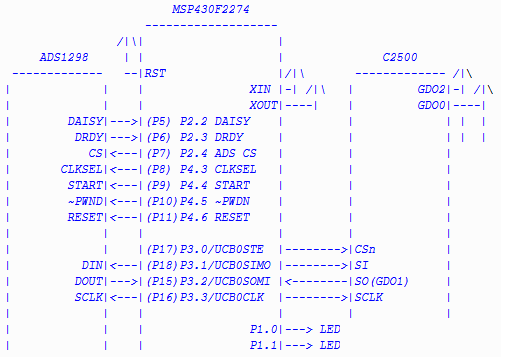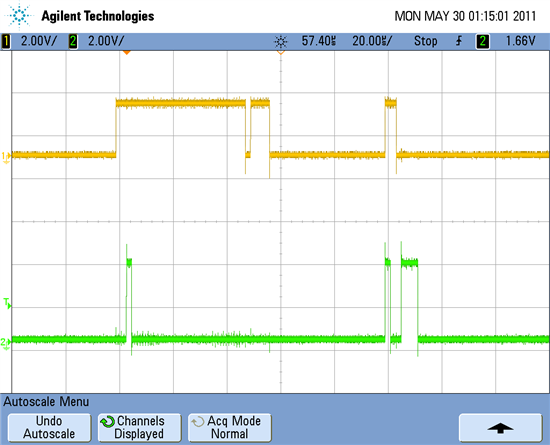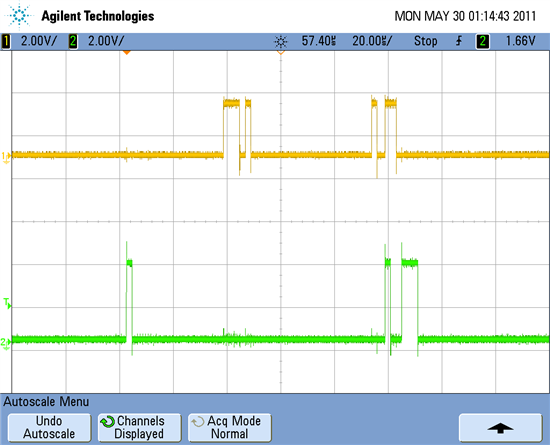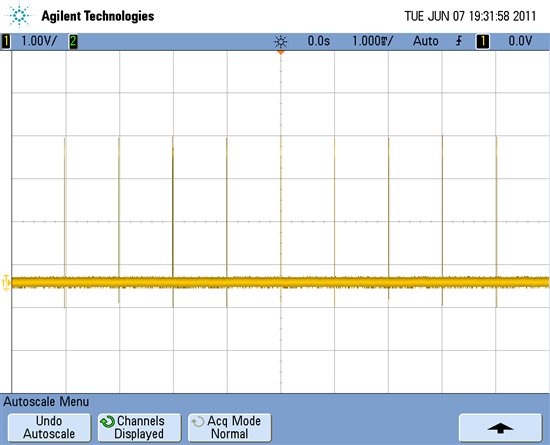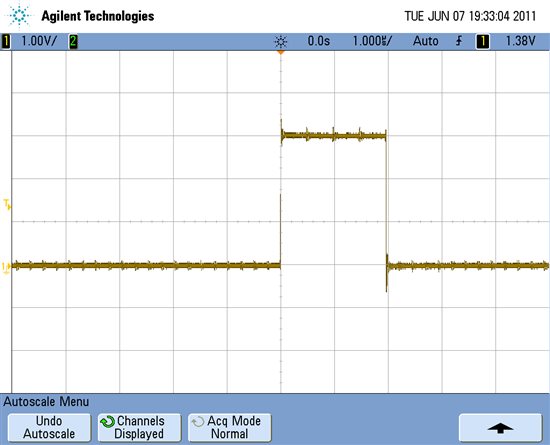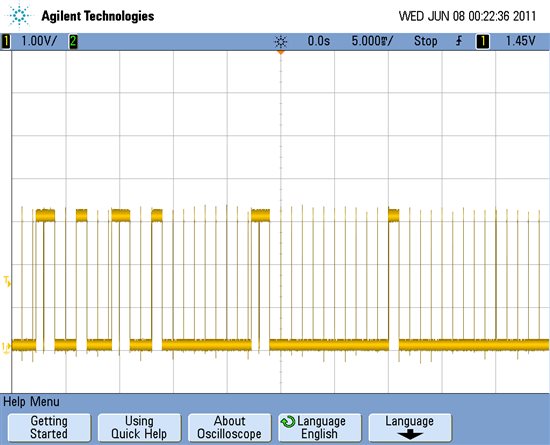Hi
(Tom, hopefully you can see my thread, I have been working hard to solve the read id version problem, so hopefully you can see my effort and willing to help me again.)
The problem is still trying to read the output from ADS1298, and in fact, I think it keeps return me 00001111 no matter what I send to it, even though I sent out SDATAC, I observed this 00001111 output at DOUT.
Here is my set up:
ADS1298: AVDD 3V, DVDD 3V from 2 x 1.5V AA batteries
RF2500, powered by its battery pack, 2 x 1.5V AA batteries
Also, there is only power and digital connection attached with ADS1298, no any capacitors, as I had designed a PCB board which seems to burn down the chip. However, I tried to keep all the flywires as short as possible, especially those for SPI.
Now I have a better oscilloscope allow me to capture some pictures, and here are some evidences, SCLK = 4MHz.
SCLK (Top) and DIN.
.
Here is SCLK (Top) and DIN, while I was sending READ DEVICE, 20h, SINGLE BYTE, 00h, DUMMY DATA, 9Ch.
This is SCLK with DIN, and DIN is 0Ah, which is STOP
.
This is one example of SCLK and DOUT, at the time I sent out STOP command.
SCLK and DOUT, evidence of the constant 00001111, so whenever I send a command over, in this case 20h (Write register 1), 00h (Single byte), 9Ch (Dummy data), I keep having the constant 00001111 as a return from DOUT.
I am still trying to see how I can capture the moment of the start up sequence, perhaps someone can give me a hint.
Thanks all


